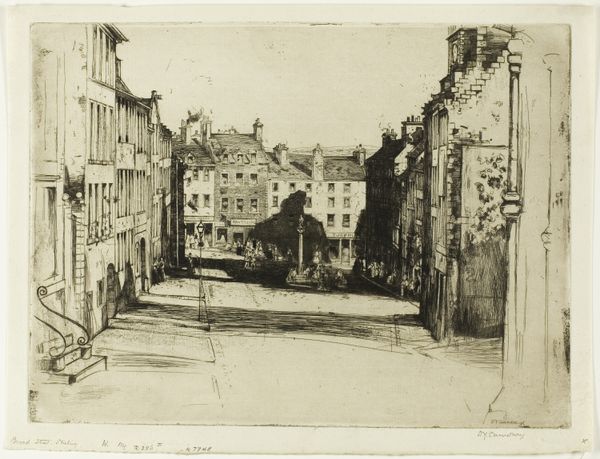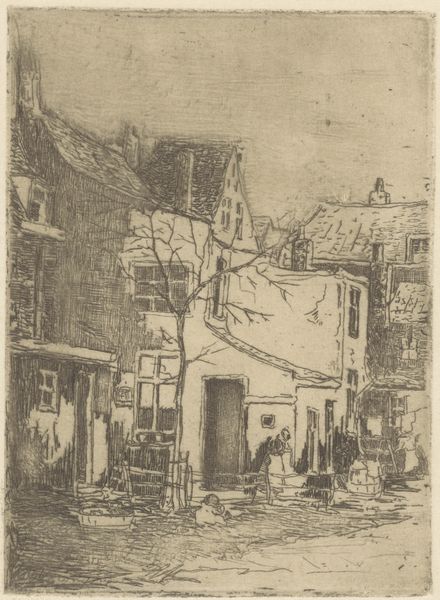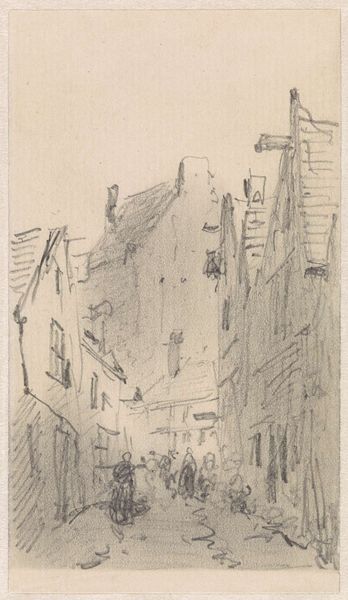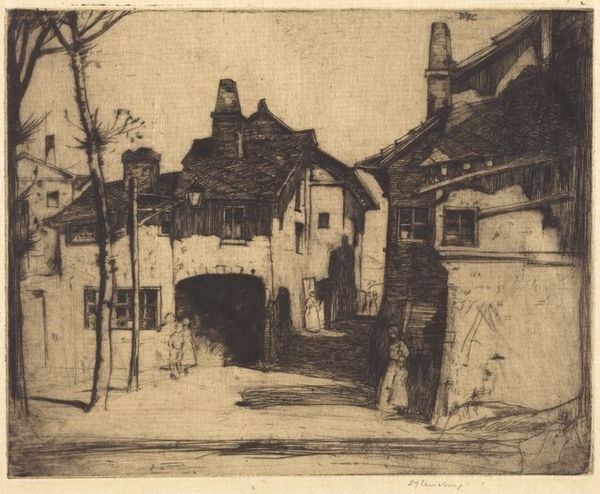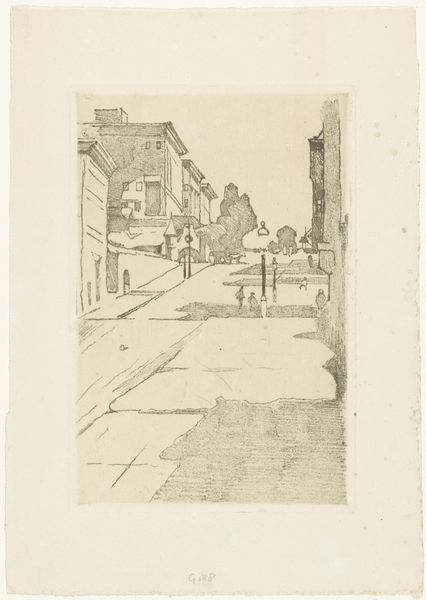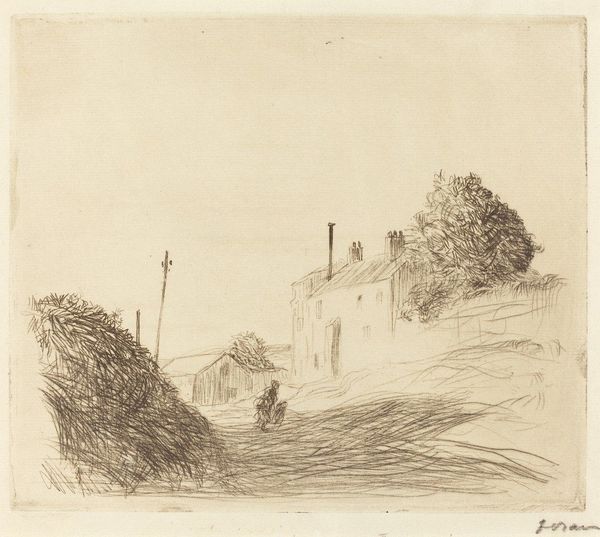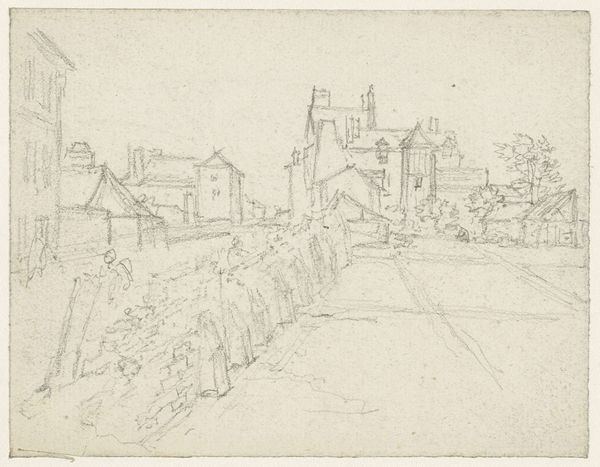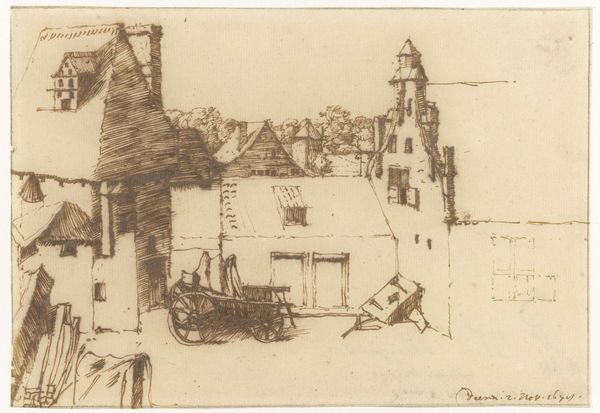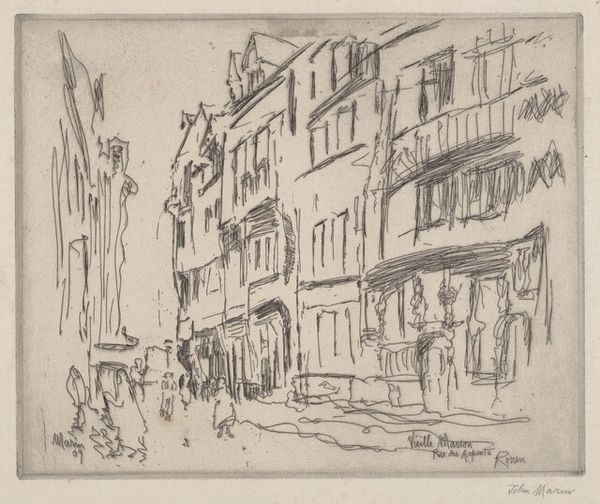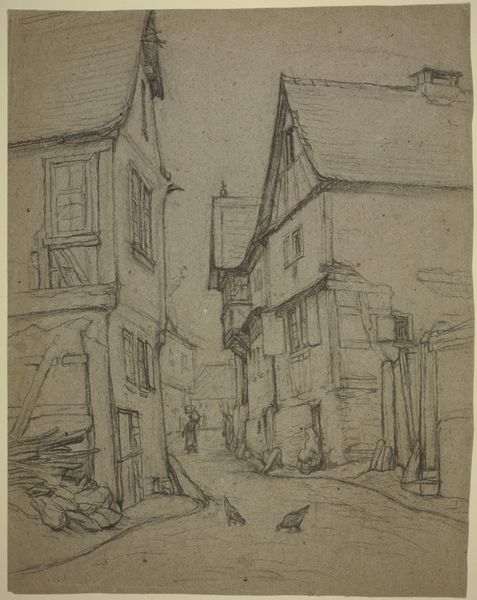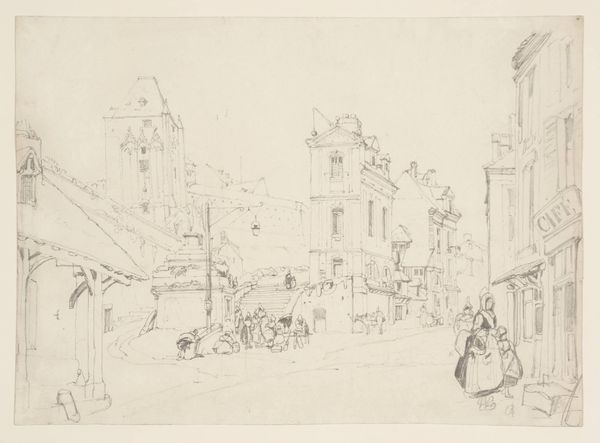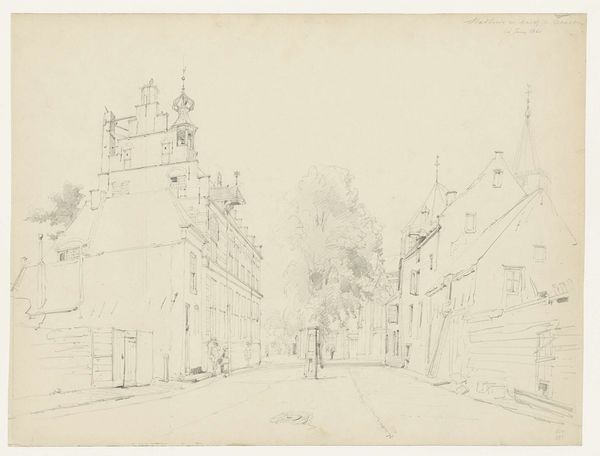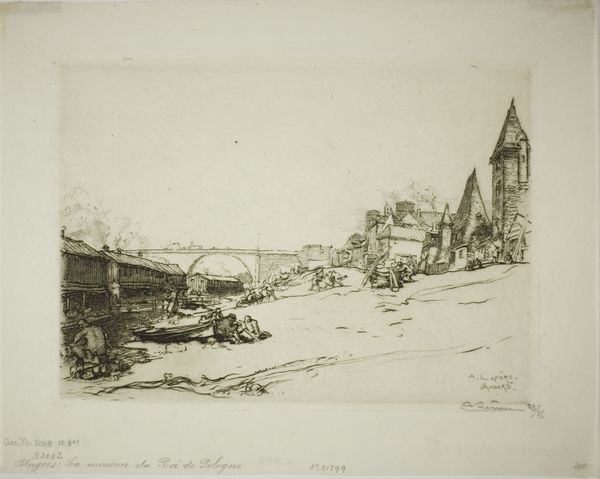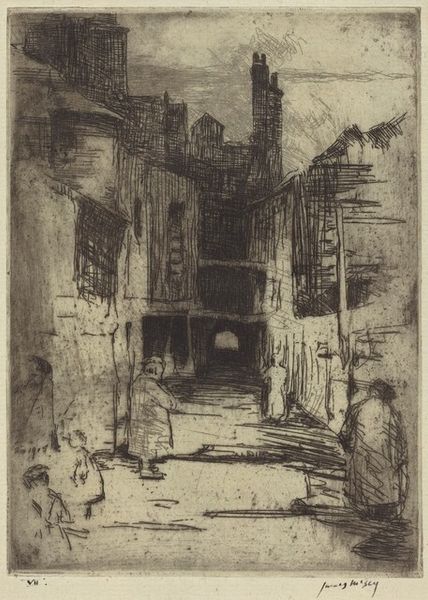
drawing, pencil
#
drawing
#
pen sketch
#
pencil
#
cityscape
Dimensions: overall: 19.9 x 26.6 cm (7 13/16 x 10 1/2 in.)
Copyright: National Gallery of Art: CC0 1.0
Editor: Here we have David Young Cameron’s "Chinon," a pencil drawing depicting a cityscape. It feels almost like a memory, this sketch – faded and distant. What draws your eye in this work? Curator: I’m struck by how this drawing positions Chinon as a kind of timeless urban landscape. It avoids specific dates, resisting modern advancements, or any immediate socio-political events. Editor: Interesting! I hadn't considered its lack of specific dating information so consciously. Curator: Notice how Cameron uses the medium – pencil – to suggest a classical past. The visible pencil lines aren't trying to mimic reality perfectly but rather presenting us with the artist's constructed vision. How might this construction influence our own perceptions of the place depicted? Editor: Well, I can definitely see your point about its classical feel. The sketchy style also leaves space for the viewer's imagination to fill in the details, right? The way it seems unfinished perhaps amplifies that feeling of distance... Curator: Exactly. And consider that cityscape, once popular with the rise of urbanization, later came to signify, for some artists, the alienation of modern life. Here, that's muted, if not erased. It doesn't seem as though Cameron is necessarily embracing it or critiquing that modern alienation that came to signify urbanity at the time. This is what draws me to his image of Chinon. Editor: It almost seems like he's side-stepping those concerns. Thinking about it, it feels so disconnected, and like his vision of it supersedes historical specifics! Curator: It highlights how artistic choices, even in something that seems straightforward like a sketch, are always doing cultural and political work, framing our understanding of place and history. Editor: I now realize there is more going on than what is on the surface. Thanks for enriching my understanding. Curator: It was my pleasure. It’s those underlying historical dialogues within artworks that often speak volumes.
Comments
No comments
Be the first to comment and join the conversation on the ultimate creative platform.
